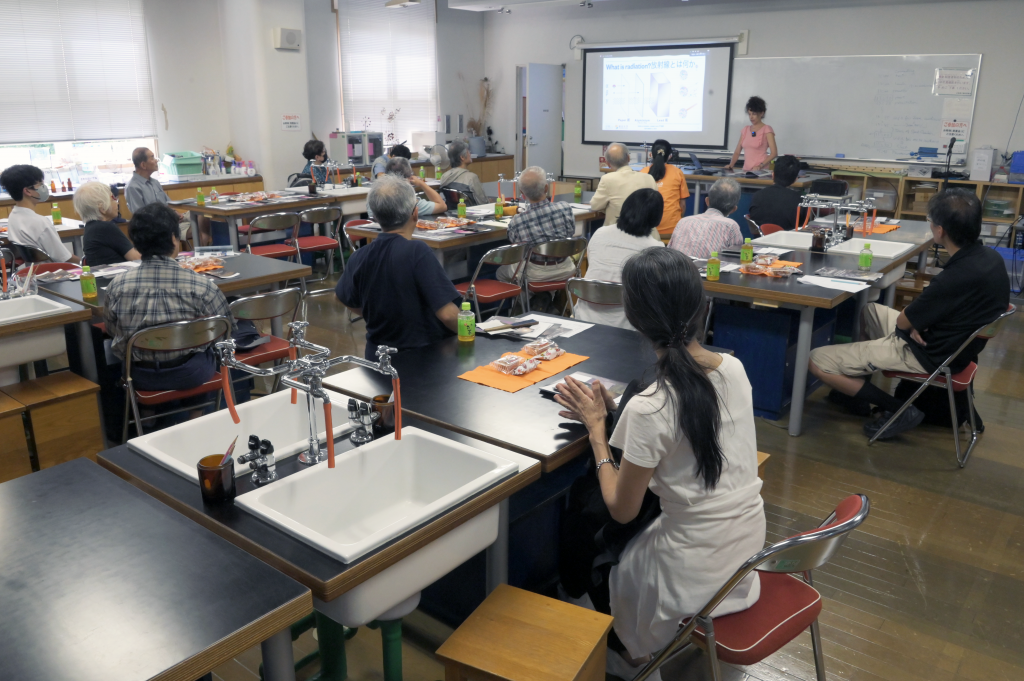Daniela Hadasch, ICRR Assistant Professor, who belongs to the High Energy Gamma Ray Group, made a presentation on September 3, 2023, at Science Café in Tamarokuto Science Center (TSC). She talked about High Energy Gamma-Ray Astronomy and 33 people attended to listen to her both onsite and online by Zoom.
ICRR Science Café in TSC is organized once or twice a year to promote scientific results of ICRR under the PR Collaboration Agreement signed in 2015. In 2020, we had to hold it online by Zoom due to COVID-19 pandemic, but from 2022 we began to accept a limited number of participants with online option. This time, ICRR Science Café in TSC was held in English for the first time, hosted by Yuichi Takayanagi, TSC Director.
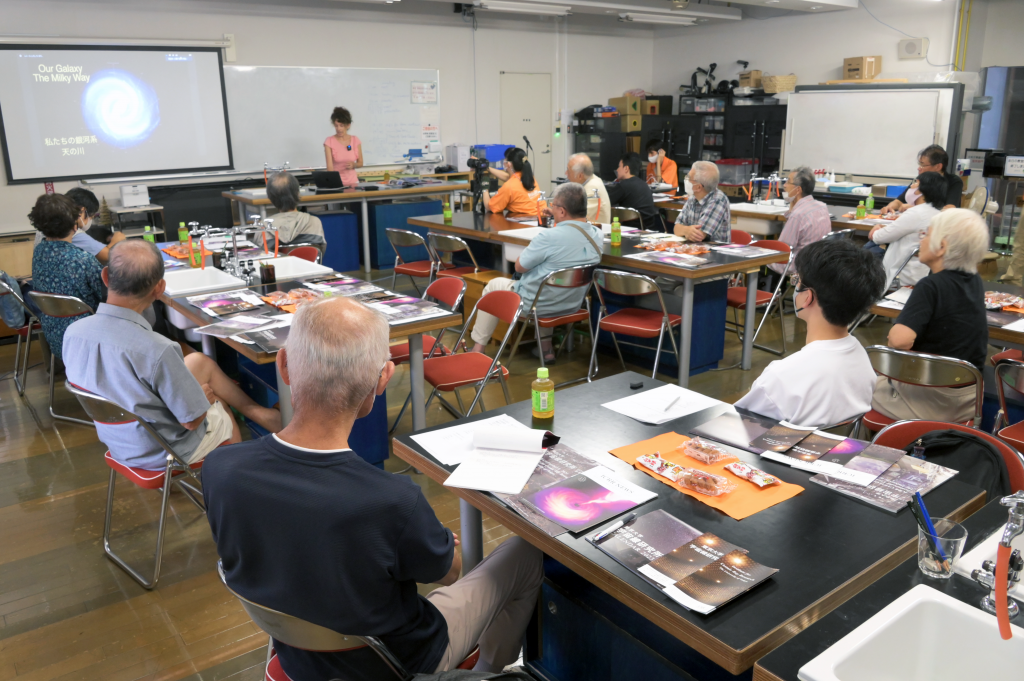
Dr. Daniela Hadasch was born and grew up in Hagen, Germany, and got the PhD degree at Universitat Autonoma de Barcelona, Spain. She has been in Japan for 9 years since she got a post-doctoral researcher position of ICRR in 2014, and 4 years later, promoted to a project assistant professor. And in January last year, she got permanent position as an assistant professor in ICRR and at the same time, The University of Tokyo selected her as Excellent Young Researcher. In ICRR, she belongs to the High Energy Gamma Ray Group and making intensive research with observing telescopes, CTA LST-1 and MAGIC which are located on La Palma, Canary Island in Spain.
How did we find Cosmic Rays? A tennis ball falling at 90km/h !?
After mentioned the big picture of the Universe and the actual location of the Earth, she explained the very tiny world of atoms, molecules, radiation and cosmic rays. “About 110 years ago, people were thinking that radiation is coming from the earth, but the Austrian physicist, Victor Hess, did a very famous Balloon experiment. He took some measurement instruments into his balloon and went up. He expected the radiation goes down if he went away from the earth. But actually, he measured that it goes the other way around. Therefore, the theory that radiation coming from the earth was rejected. Radiation comes from the universe, the outer space. For this finding, Victor Hess received the Nobel Prize in 1939. It was a big discovery.”
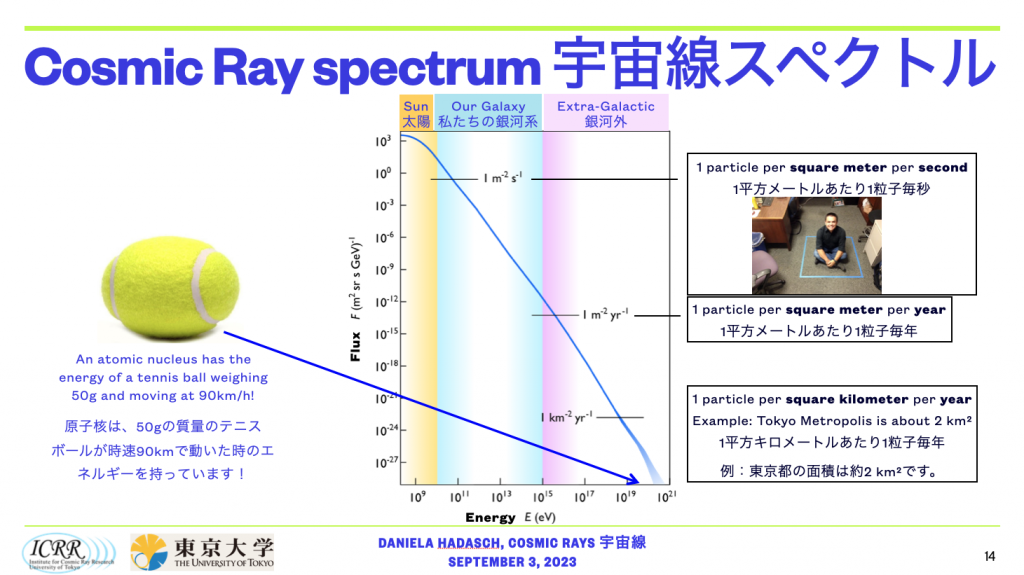
She explained that cosmic rays are mostly made of protons (90%) and the energy spectrum observed so far shows that the higher the energy, the lower the flux. On the top of that, describing a cosmic ray as a tennis ball, she told the audience, “Imagine a tennis ball moving at the speed of 90 km per hour, it has the same energy as a cosmic ray with 1020eV which might be coming from the outer space. ”
The primary cosmic rays which include such ultra-high energy cosmic rays are thought to be dangerous to human because they will destroy atoms, which cause cancer and any other diseases. But they do not reach the earth because our atmosphere protects us by absorbing such dangerous cosmic rays, producing air showers containing lower energy radiation which cascade towards the earth. Then she talked about the reason why she observes gamma rays, “We can’t see beautiful milky way by cosmic rays. Because they are electrically charged particles which are easily bent many times by electromagnetic fields in the galaxies. So we can’t say where they were coming from. But gamma rays are not electrically charged as well as other electromagnetic waves (light) and cosmic rays and gamma rays are thought to have same sources. That’s why we observe gamma rays to solve the 110-year mystery of the sources of cosmic rays.”
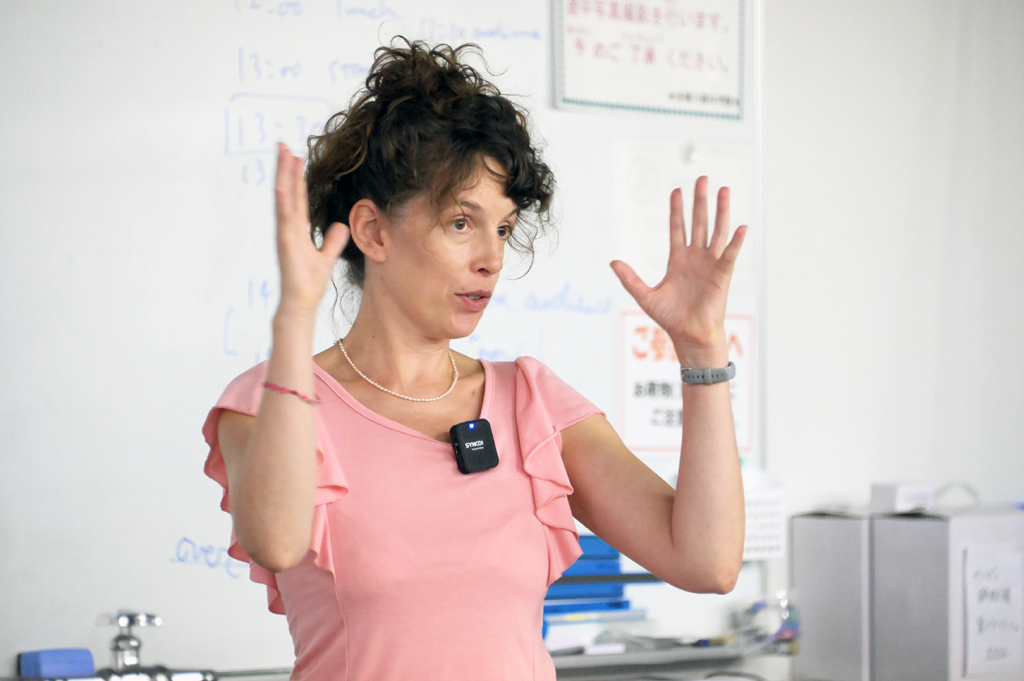
Also she suggested the significance of multi-messenger astronomy by showing different pictures of our Milky Way using multi-wavelength observation; Gamma-ray, X-ray, optical, infrared, radio continuum, etc. As sources of gamma rays, she showcased the Crab Nebula and Active Galactic Nuclei in the long distance, with saying “This is one of the good examples to see how important it is to study stars at different wavelengths. So, it is not enough just looking at the visible light to really understand the object. You need the whole range of energy.”
How to observe gamma rays from the Earth surface?
High energy radiations including gamma rays hit the atmosphere and produce air showers which cascade towards the earth. At this moment, “Cherenkov Radiations” is produced alongside the air shower. She explained how they are produced, saying “Protons, electrons and muons are moving faster than the speed of light in the atmosphere. Because of this high velocity, Cherenkov radiation is produced in the atmosphere. These are blue, very faint and short light flashes, which can be detected by ground-based Cherenkov telescopes such as MAGIC and CTA LST-1.” She compared its mechanism as ripples in a pond created by a waterfowl or shock waves in the sky produced by a jet fighter. And she explained in detail, showing simulation movies of air showers created by some kinds of particles.
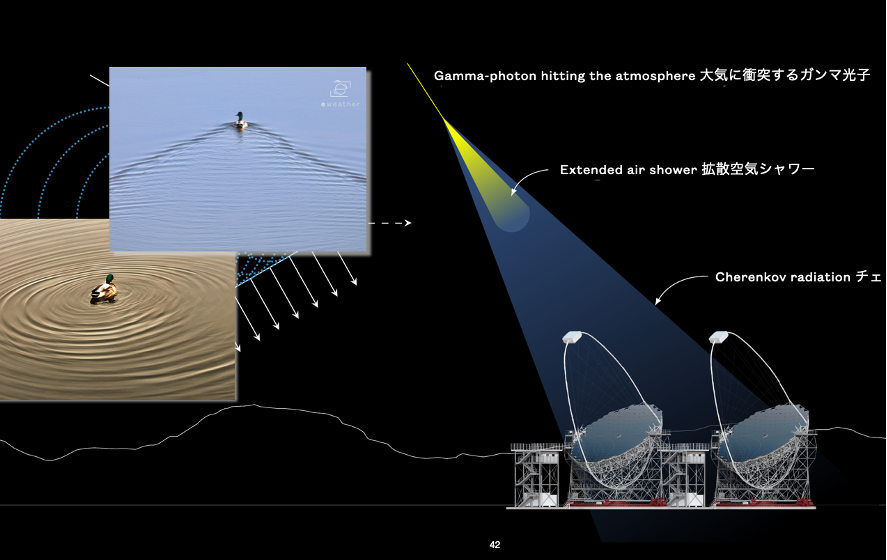
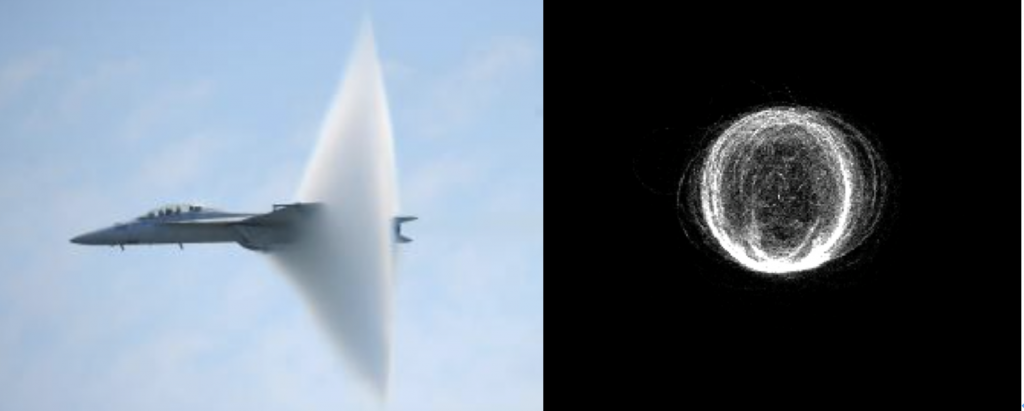
This Cherenkov light is very faint and can be observed only by special telescopes. She said that technologies used in the telescope is high-end and very expensive. Moreover, problem of “light pollution” makes it difficult to find right spots for observation. So we have only three telescope alley spots in the world; VERITAS in USA, H.E.S.S. in Namibia and MAGIC on La Palma in Canary Island, Spain, which she has been working on.
On La Palma, the special law of sky was established in 1988 to prohibit people to use usual streetlights. Only special, orange-colored lights are allowed there, which are easily filtered and don’t disturb the astronomical observations. She added, “La Palma is specially protected so that you have nice astronomical observation. And many other telescopes were installed there.”
Cherenkov telescopes on La Palma
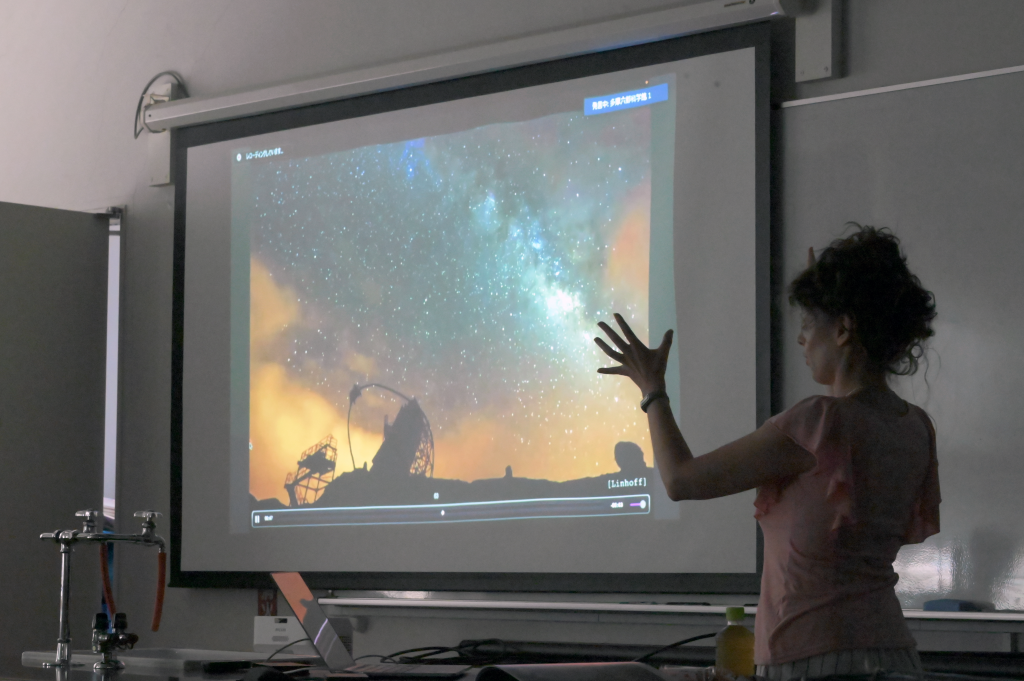
She showed slides which contained two pictures of inside of the “counting house” next to the MAGIC in both 2003 and 2023, a tape cutting scene at the inauguration ceremony for LST-1, and montage-photos of the future CTA with new 100 telescopes installed in both northern and southern hemisphere sites. She added, “In the northern site in La Palma, we can nicely see the universe. LST-1 is already working there. This year or next year, other three big telescopes will come. Hopefully, 3 or 4 years later, we will have more telescopes in La Palma. In the southern site in Chile, we can nicely see our galactic plane. We will build 4 big telescopes and many small ones there. But we haven’t started yet. ICRR belongs to the Japan CTA group in charge of building big telescopes. We are producing mirrors and cameras for them and ship them to La Palma.”
Showing a time-laps video featuring continuous observation through one night of LST-1 and another movie on how to build LST-1, she explained, “Our telescope is moving and following the sources. Actually the sky at night is very bright and if you walk around, you can see the shadow only because of the light the milky way.”
Visualizing cosmic rays everywhere around us by Spark Chamber
She returned to the topics on cosmic rays everywhere around us and said, “We can measure radiation here in this Institute by what we call Spark Chamber. Spark Chamber consists of two Scintillators, one is on the top, the other is on the bottom, and it is filled with gas: usually helium or neon. The moment when charged particles are going through the chamber and ionizing gas inside, we are applying high voltage. This high voltage makes a spark along the track of the charged particles. High voltage is applied only if the scintillator 1(top) and scintillator 2 (bottom) is detecting the charged particles.” Participants came close to the Spark Chamber in turn to observe sparks appearing one after another.
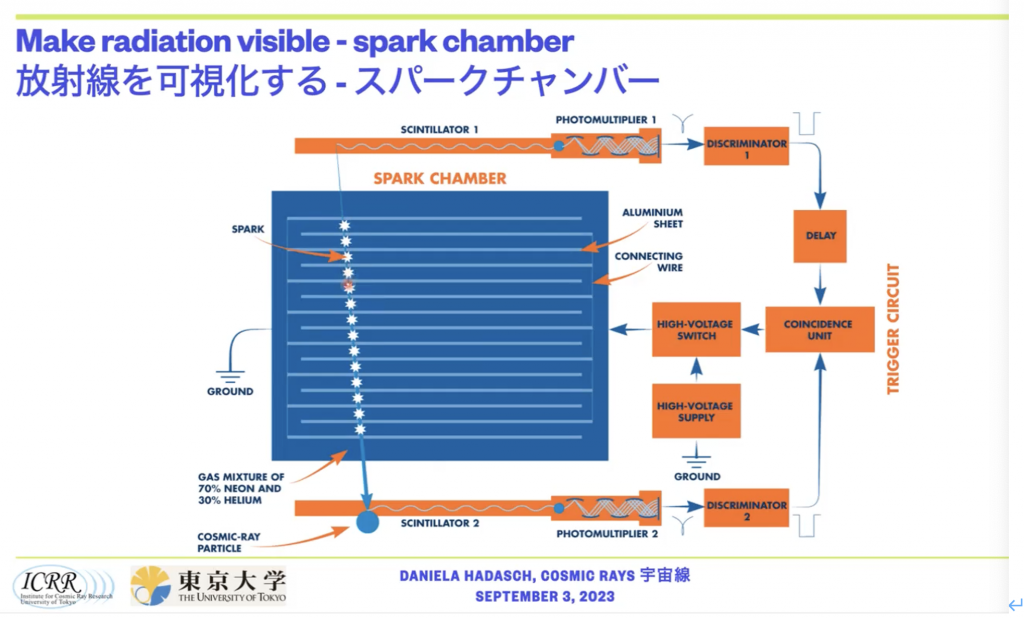
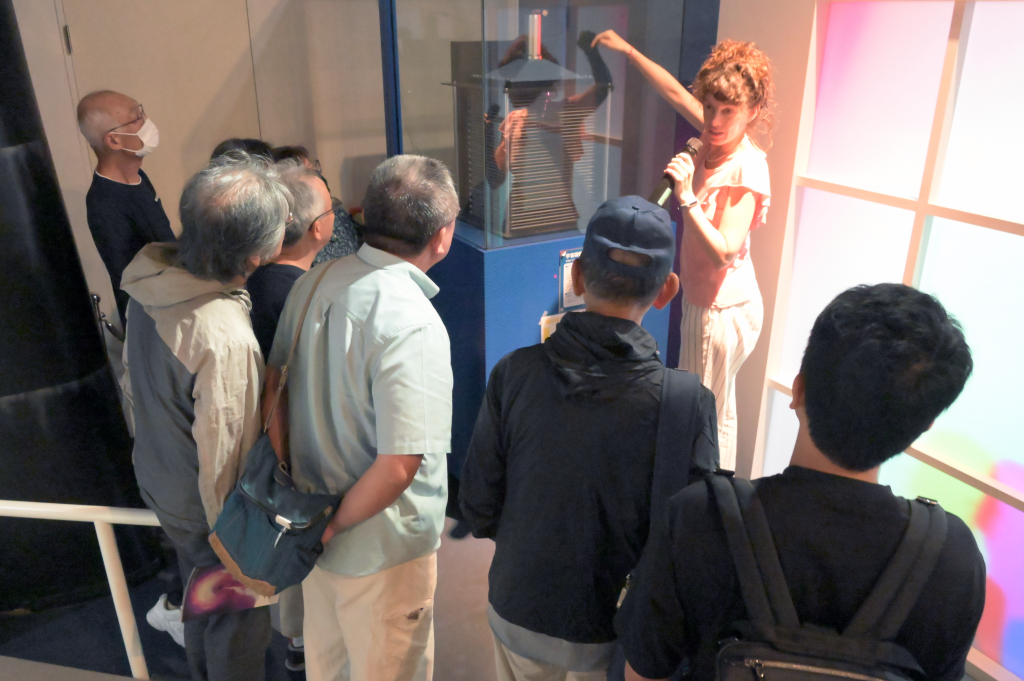
Answering many questions courteously
During the final question time, participants asked her many questions; “You told us that you observe Cherenkov radiation produced by the interaction between gamma ray and atmosphere. Is this observation affected by the air pollution? ”, ”What kind of clock do you use when you detect Cherenkov radiation produced by gamma rays? ”, “Why don’t you detect gamma rays during day time? ”, “Why do you observe gamma rays by Cherenkov telescope on the earth, not by artificial satellites in the outer space? ” Dr. Hadasch answered courteously each question.
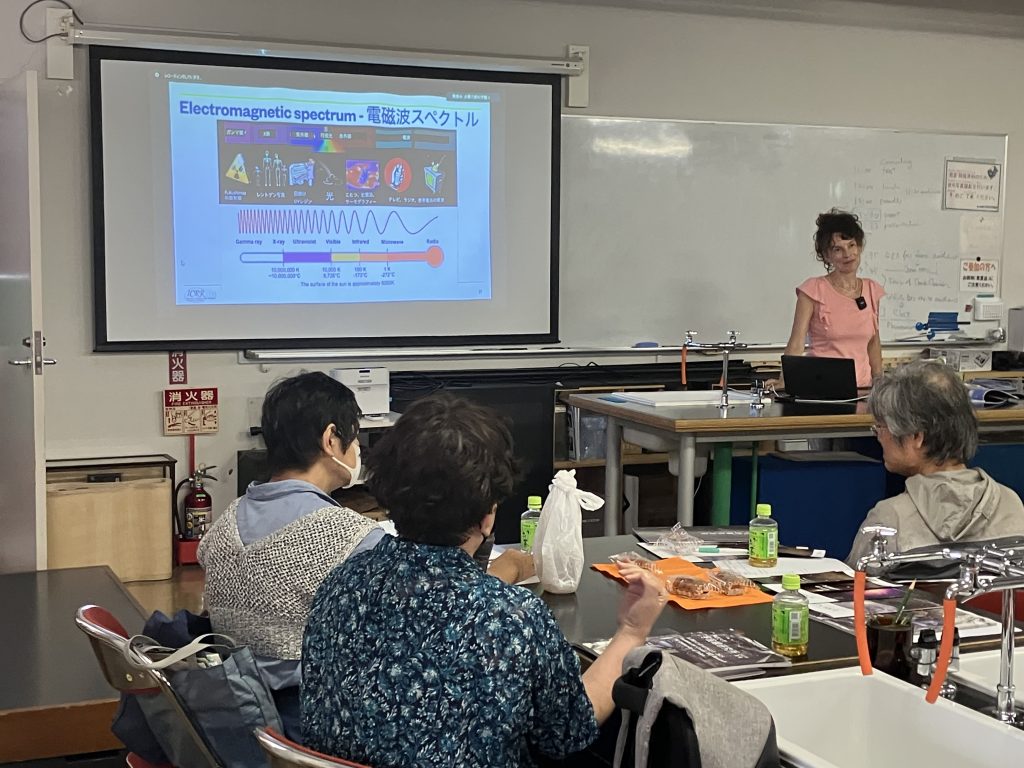
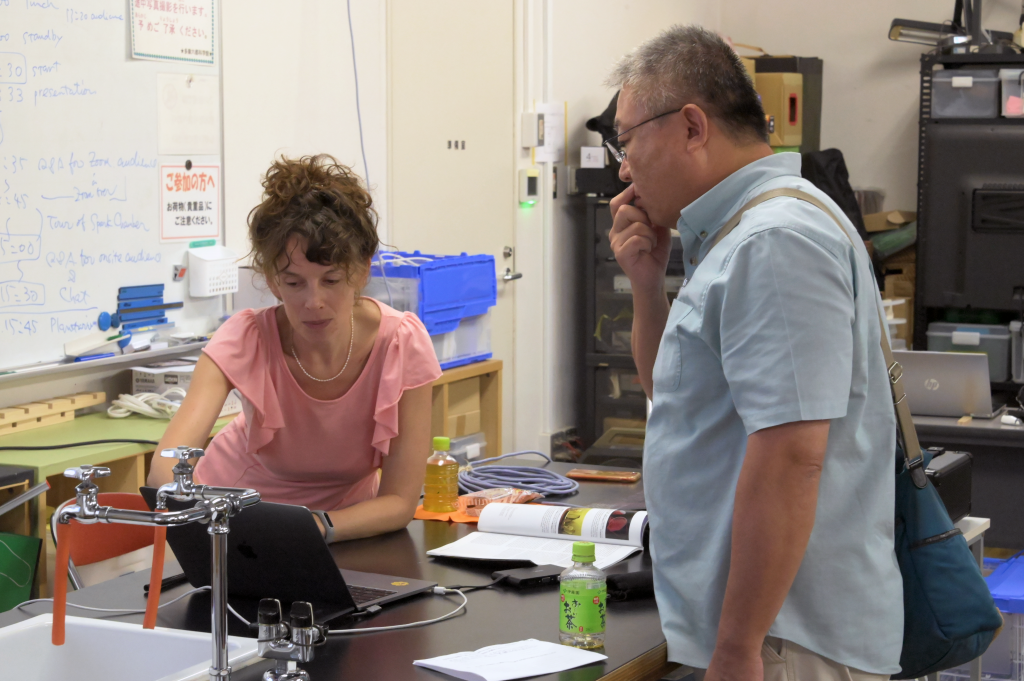
Related LINK & Website News (in Japanese only)
・Cherenkoc Telescope Array
・2023年6月23日 【トピックス】文部科学大臣表彰・科学技術賞を受賞した手嶋名誉教授が記念講演 「大口径チェレンコフ望遠鏡の開発とガンマ線天文学の研究」
・2023年2月4日 【プレスリリース】巨大望遠鏡で狙う暗黒物質からの”光”—天の川銀河中心観測で解き明かす宇宙暗黒物質の起源と正体
・2019年11月21日 【プレスリリース】地上のチェレンコフ望遠鏡がガンマ線バーストの信号を初観測 〜誕生直後のブラックホールから過去最高エネルギーのTeVガンマ線放射を確認〜
・2018年10月11日 【プレスリリース】チェレンコフ・テレスコープ・アレイ(CTA)大口径望遠鏡1号基 完成記念式典を開催後、試験運転を開始
